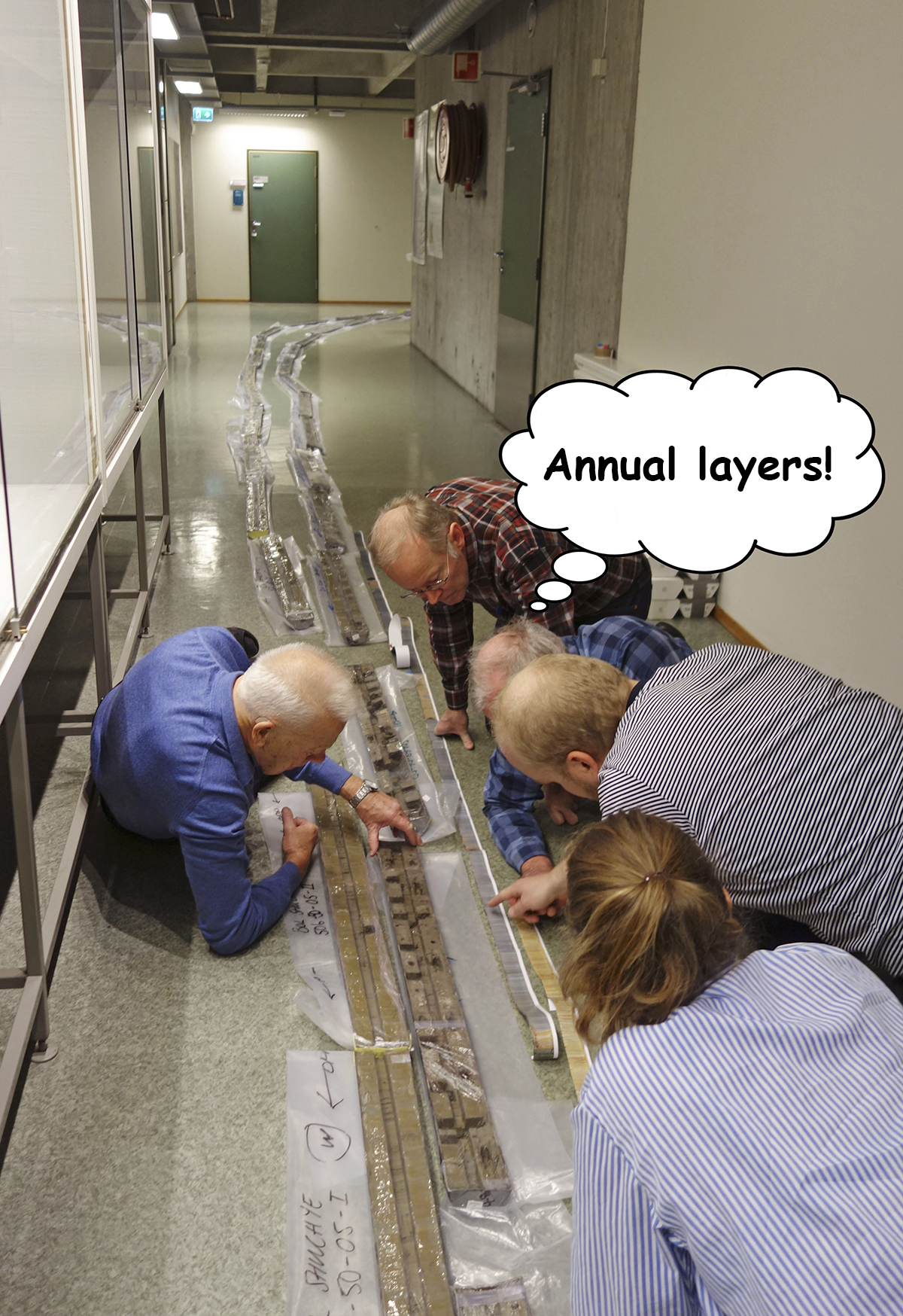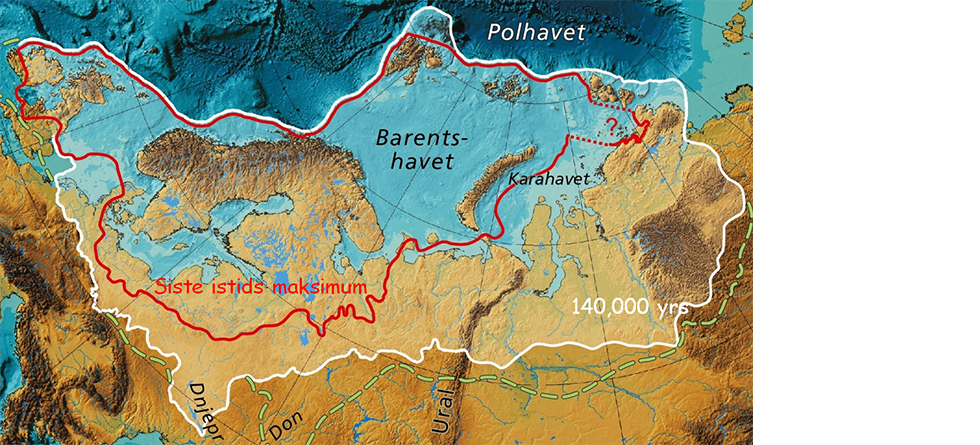Written by John Inge Svendsen, professor at the Bjerknes Centre and the Department of Earth Science at the University of Bergen.
We are a group of researchers at the Department of Geoscience who for 25 years have studied changes of the Arctic environment from the Ice Ages to the present. As part of our ongoing project CHASE (Climate History along the Arctic Seaboard of Eurasia) we have cored and investigated the bottom sediments in the deepest lake in the Ural Mountains, which is located near the northern tip of the mountain chain, well north of the Arctic Circle.
Some of our results were recently conveyed in a series of seven scientific papers that were published in the journal Boreas, in a special issue dealing with Arctic Lakes. To our surprise, the seismic profiles showed that the rock surface below the lake is located as far down as 110 meters below the present sea level, and that the lake basin is filled with 160 meters of soft sediments.
Our interpretation of the sediment stratigraphy, which is consistent with results from the surrounding area, is that the last time a glacier covered the lake happened more than 50,000 years ago. This is in many ways surprising results, not least considering that Scandinavia was covered by an up to three kilometers thick ice sheet that reached south to Germany and Poland during the Last Glacial Maximum about 20,000 years ago.

We recovered cores up to 55 meters long, which contains a continuous sediment sequence that accumulated over the last 25,000 years. The lower part of the cored sequence contains distinct annual layers, providing unique opportunities for high-resolution studies of the environment and climatic changes.
DNA and pollen from plants as well as paleomagnetic investigations of the cores are underway, whereas finds of DNA molecules derived from animals are presented in the issue. Results from the latter DNA analyses show that several species of terrestrial and limnic worms have been living in this permafrost area ever since the peak of the last glaciation, a new and startling results.
Based on discoveries from an adjacent archaeological site, we are also fascinated by the fact that cave lions were sneaking along the Polar Urals, and not the least that humans were living in these landscapes far north of the Arctic Circle in the period around 16-15000 years ago.
References
Melles, M., Svendsen, J.I., Fedorov, G. and Wagner, B. 2019: Northern Eurasian lakes -late Quaternary glaciations and climate history - Introduction. Boreas 48, 432-443. https://doi.org/10.1111/bor.12395
Svendsen, J.I., Haflidason, H., Henriksen, M., Hovland, M., Mangerud, J., Nazarov, D, Strand Lohne, Ø., Regnéll, C., Gyllencreutz, R., Færseth, L.M.B., Schaefer, J. 2019: Glacial and environmental changes the last 60,000 years in the Polar Ural Mountains, Arctic Russia, inferred from a high resolution lake record and observations from adjacent areas. Boreas 48, 407-431. http://dx.doi.org/10.1111/bor.12356
Hufthammer, A.K., Svendsen, J.I., Pavlov, P. 2019: Animals and humans in the European Russian Arctic towards the end of the last Ice Age and during the mid Holocene. Boreas 48, 387-406. http://dx.doi.org/10.1111/bor.12343
Lammers, Y., Clarke, C.L., Erséus, C., Brown, A.G., Edwards, M.E., Gielly, L., Haflidason, H., Mangerud, J., Rota, E.., Svendsen, J.I., & Greve Alsos, I. 2019: Clitella worms (Annelida) in late-glacial and Holocene sedimentary DNA records from the Polar Urals and northern Norway. Boreas 48, 317-329. http://dx.doi.org/10.1111/bor.12363
Haflidason, Haflidi; Zweidorff, Julie Lundekvam; Baumer, Marlene; Gyllencreutz, Richard; Svendsen, John Inge; Gladysh, S; Elzaveta, L. 2019: The Lastglacial and Holocene Seismostratigraphy and sediment distribution of Lake Bolshoye Shchuchye, Polar Ural Mountains, Arctic Russia. Boreas 48, 451-469. http://dx.doi.org/10.1111/bor.12387
Haflidason, H.Regnéll, C.; Pyne-O'Donnell, S., Svendsen, J.I. 2019: Extending the known distribution of the Vedde Ash into Siberia: occurrence in lake sediments from the Timan Ridge and the Ural Mountains, northern Russia. Boreas 48, 444-451. http://dx.doi.org/10.1111/bor.12354
Lebas, E., Krastel, S., Wagner, B., Gromig, R., Fedorov, G., Baumer, M., Kostromina, N. and Haflidason, H. 2019: Seismic stratigraphic record of Lake Levinsson-Lessing, Taymyr Peninsula: evidence for ice sheet dynamics and lake level fluctuations since Early Weichselian. Boreas 48, 470-487. https://doi.org/10.1111/bor.12381
Regnéll, C.-, Haflidasson, H-, Mangerud, J and Svendsen, J.I., 2019: Glacial and climate history of the last 24 000 years in the polar Ural Mountains Arctic Russia, inferred from partly varved sediments. Boreas 48, 432-443. http://dx.doi.org/10.1111/bor.12369

